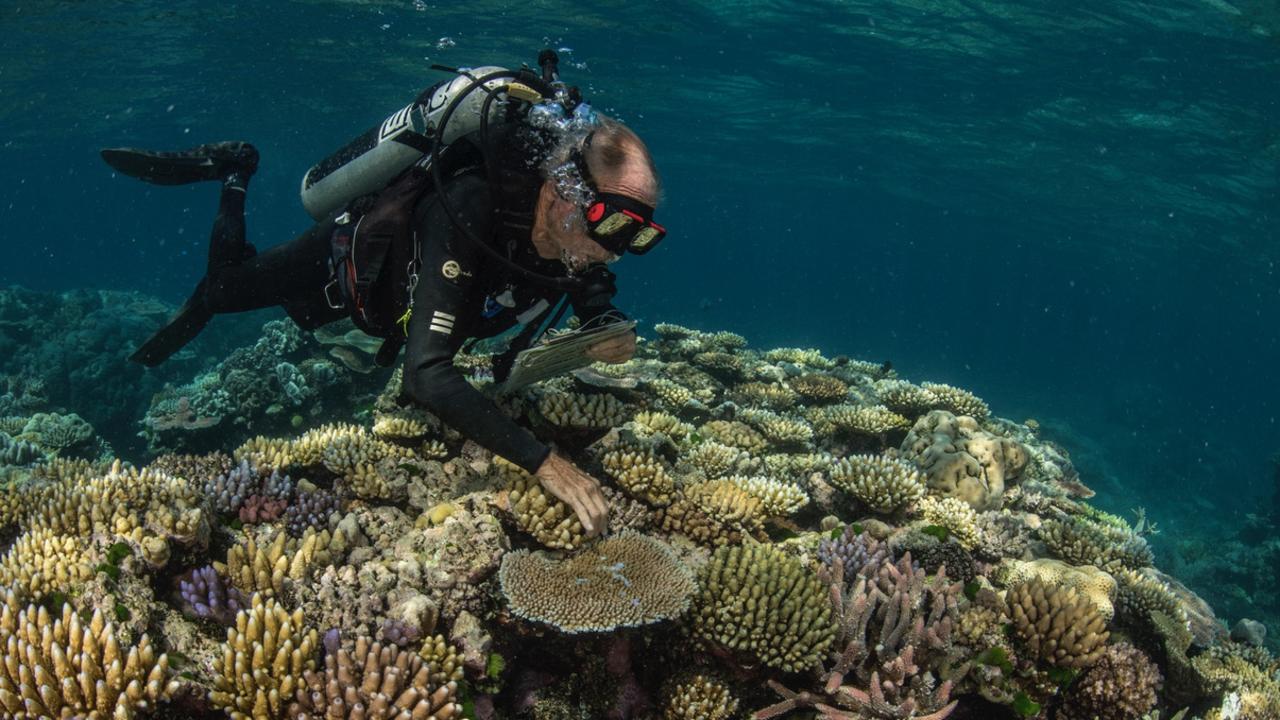‘Godfather of coral’ warns Great Barrier Reef may get ‘clobbered’ if El Nino strikes this year
Warnings of an El Nino developing this year have struck fear in the hearts of experts who are racing to save the Great Barrier Reef from ecological disaster.
Warnings that an El Nino climate event will develop this year have struck fear in the hearts of experts who are racing to save the Great Barrier Reef from ecological disaster.
Among them is Dr Charlie Veron, known as the ‘godfather of coral’, who has been working on preserving and cataloguing the hundreds of species that exist on the Reef since 1972.
He has watched the natural wonder deteriorate before his eyes due to climate change. Now he fears the coming El Nino will push the precious ecosystem past the brink.

“Once corals were in their comfort zone, now they’re not,” Dr Veron told news.com.au.
“In the 1980s, the [coral] bleaching started and it was pretty clearly correlated with temperature, and the temperature was correlated with El Nino.
“Then, around the turn of the century, all the mass bleachings were linked to El Nino.”
There have been six mass bleaching events since 1998 – four in the past seven years – and evidence has found the most devastating bleaches have occurred during El Nino events.
The longest, most widespread and “probably most destructive” bleach occurred between 2014 and 2017, correlating with an El Nino event between 2015 and 2016.
It saw about three-quarters of the world’s reefs damaged, and 30 per cent died as a result, according to the US National Oceanic and Atmospheric Administration (NOAA).

In 2022, scientists reported more than 90 per cent of the Great Barrier Reef had been damaged after a mass bleach that year – which was the first to occur during a La Nina event, when waters are cooler, and corals should be able recover.
Dr Veron said it proved just how precarious conditions for coral and the Great Barrier Reef had become, conditions that are only exacerbated by El Nino and La Nina events.
“What’s happening now is that every year causes bleaching. Every year has the potential for causing mass bleaching,” he said.
And this year’s predicted El Nino event, Dr Veron continued, “is going to strike at a higher base temperature than the Great Barrier Reef has ever seen”.
But it is not just El Nino’s effect on sea surface temperatures, that trigger bleaching, it is the weather patterns it influences, too.

“It’s a combination of light and temperature. Bleaching needs to have clear blue skies, and clear blue skies bring higher temperatures,” Dr Veron explained.
“El Nino hasn’t affected the whole Great Barrier Reef in the past because monsoon conditions have protected parts of the reef. But El Nino causes them to retreat.
“So the question is how much of the Great Barrier Reef is going to be affected – if those clear blue skies occur over the entire reef, it could all be bleached.”
He estimates the Great Barrier Reef, which is home to about 70 per cent of all coral in the Indo-Pacific region, has lost “about half” of its estimated 500 coral colonies.
And a looming El Nino summer puts the rest in “critical danger”.
“If the Great Barrier Reef gets clobbered, it’s going to have ramifications everywhere – biological, financial, human – so we’ve got to hope like hell that it’s not going to happen, but we are looking at a severe El Nino coming”.

That is why Dr Veron and Great Barrier Reef Legacy are racing against the clock to collect and store at least 400 species of coral in the world’s first Living Coral Biobank.
The biobank, which opened at the Cairns Aquarium last week, is the product of a life’s work researching and preserving the reef’s precious ecosystems by the ‘godfather of coral’ – who, alone, has discovered about 20 per cent of the world’s coral species, which he has catalogued online.
Dr Veron is one of the few people in the world who can do this kind of underwater coral research, a skill it took decades to develop. And, unfortunately, he does not have an apprentice of sorts in training. And the reef does not have time to waste.
“It would be an unspeakable tragedy if we did not have these vulnerable species in the biobank, then you have a source for experimental work, genetic work, education, all sorts of things,” he said.
“I certainly want to get this done before I hang up my snorkel and play bingo. It has to be, there’s no plan B.”





